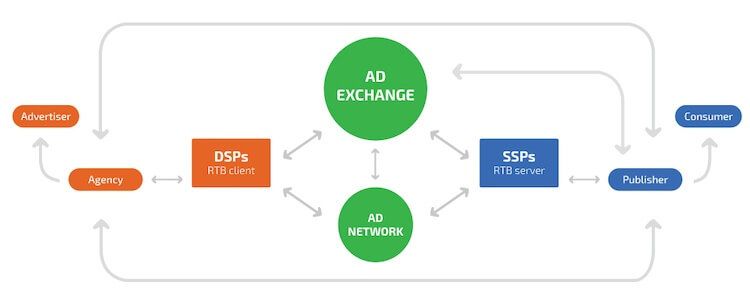A supply-side platform (SSP), also known as retail web advertising platform, is advertising technologies (AdTech) system that enables advertisers to manage, sell and optimize their available inventory (aka ad space) on a pay-per-click (CPC) basis. Advertisers use SSPs to bid for ad space on publishers' websites. Publishers, in turn, use these bidding mechanisms to display relevant ads on their websites. Advertisers pay publishers based on the number of times their ads are displayed on a website.
An SSP is not a website or an app - it is simply a middleman between the advertiser and the publisher. Advertisers register with an SSP and supply them with ad links. Publishers choose which ads they want to display and submit those to the SSP. When someone clicks on those ads, the publisher gets paid a commission from the advertiser.
The SSP manages the inventory of ads and submits those ads to publishers who then choose to display them on their websites or in their mobile applications. Publishers submit ads to the SSP in batches according to a pre-established schedule. Once approved, publishers have control over the ads once they have been displayed on a website or in their app. Advertisers need to know exactly what inventory they will be paying for, so they submit ads according to a pre-established schedule.

DSPs differ from SSPs in that they act as a gateway between the advertiser and the publisher. The DSP's bid against each other and split the bid amount between the buyers and sellers, as determined by the supply and demand in the market. The DSP uses an online interface to identify the highest bidder for each ad and then uses its buying power to drive auctions up to the highest bid. The process is similar to what happens in the auction market, where a seller may post a low bid for a product until a competing bidder bids higher to get the ad.
As the name implies, the RTP method (Real Time bidding) benefits from being an SSP and using DSPs for the inventory management. In RTP, advertisers submit their ads and wait to be selected. Publishers bid against each other, but since there is no auction, publishers do not pay unless their ads are clicked on. Advertisers benefit because they get exposure to large audiences via the DSP website or app, and publishers benefit because they avoid paying fees for impressions that do not result in sales.





